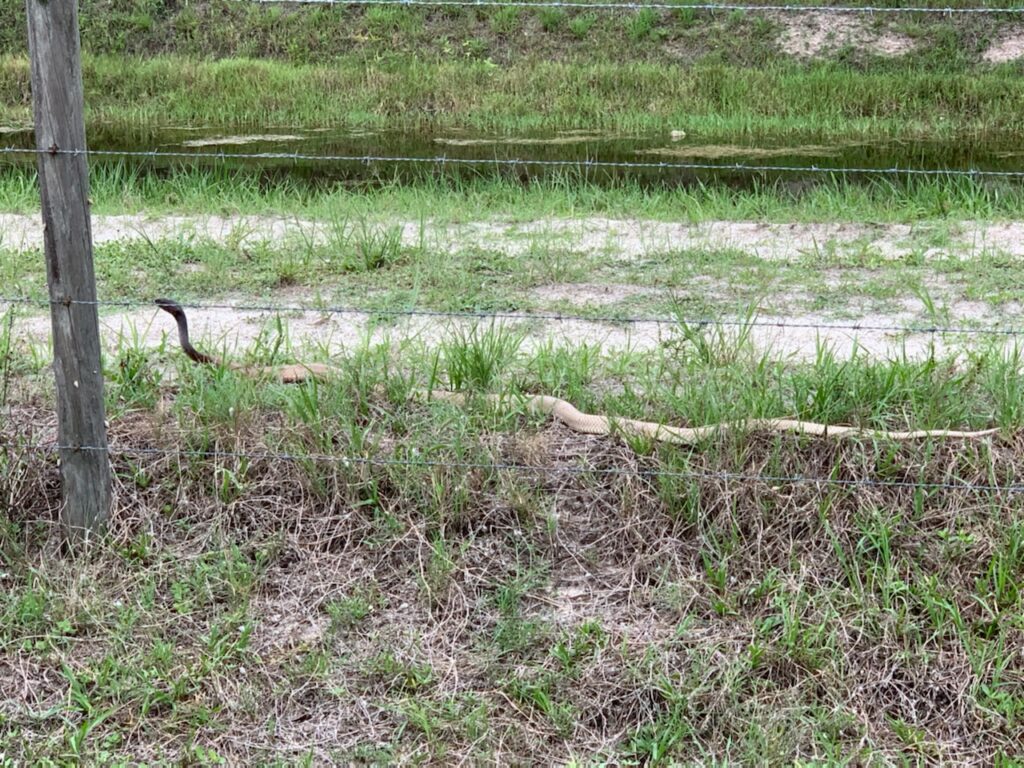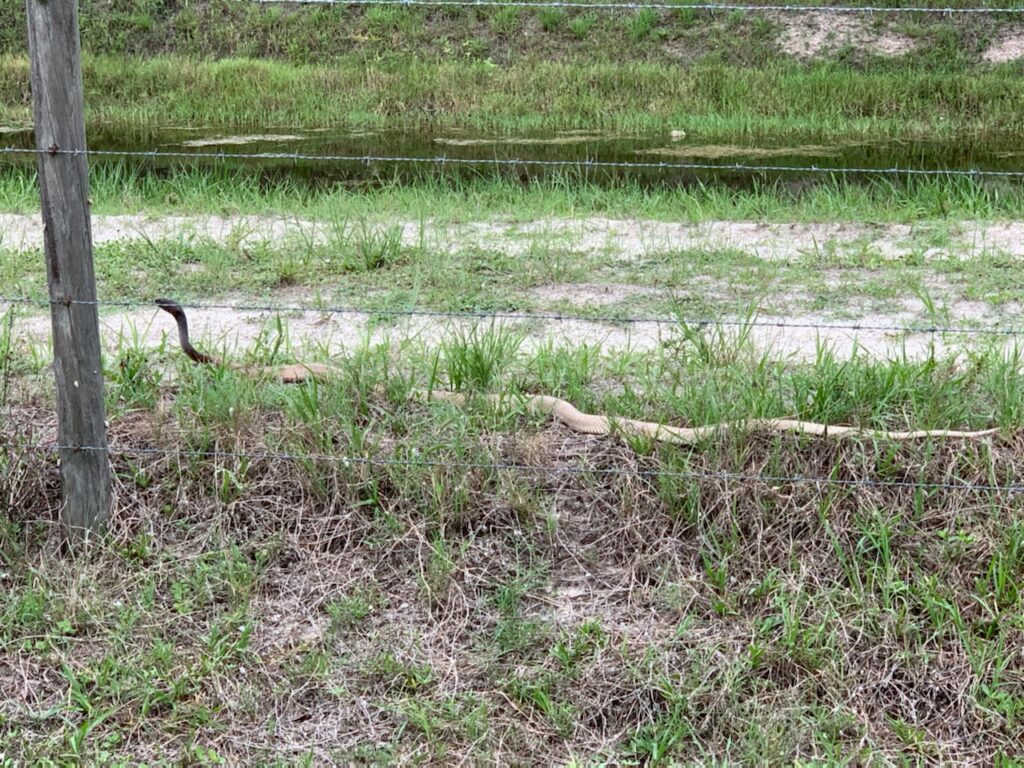
Eastern Coachwhip Snake: (Masticophis flagellum flagellum)
Eastern coaschwhip snakes (masticophis flagellum flagellum); also known as whip snakes are members of the colubridae family. They average in size between 50 to 70 inches long, with the record being 102 inches long. The eastern coachwhip is one of North Americans largest snakes.
Eastern coachwhip snakes have long and slender bodies with smooth scales. Their color patterns vary, most eastern coachwhip snakes usually have a black head and neck with their bodies gradually lightening to a tan or creamed colored tail and some are a bright tan or creamed colored, as well as an all black pigment. Eastern coachwhips bellies are the same color as their backs, some may have two rows of black spots running parallel with their body length. Their heads are oval shaped and their pupils are round and their eyes are covered with protective supraocular scales. The young are tan or brown with dark cross – bands.
Eastern coachwhips are found throughout Florida, however this excludes the Keys. They inhabit areas such as pine and palmetto flat – woods, scrubs, pine – turkey oak sand – hills and along beaches around sand dunes sea oats and grape vines.
Eastern coachwhips are carnivores and opportunistic feeders. Their primarily consume rodents, squirrels, birds and bird eggs, rabbits, other snakes (including their own species), lizards, frogs and other small animals.
Eastern coachwhips are diurnal, meaning they are active during the day. Coachwhips are extremely fast on the ground, moving at higher speeds than the black racer. They are also excellent tree climbers, but prefer spending most of their time on the ground. Eastern coachwhips are nervous, unstable and easily agitated snakes when startled. When they are frightened or threatened they will begin to vigorously vibrate the tip of their tails on leaf debris producing a sound almost like a rattlesnake and strongly strike repeatedly attempting to ward off the danger, usually they quickly flee. Eastern coachwhip snakes are aggressive while defending itself, they will not chase after humans to “whip” them to death as the legends states. It was believed that the eastern coachwhip would attack a human by beating them with their whip like tail. This is not true because if the snake violently whipped its body around it would break its back and spinal cord immediately. The eastern coachwhip snakes name came from, their large scales on their long narrowing tapering tail, having the appearance of the braided bullwhip. Their bites are harmless to humans, pets and livestock, however some swelling, redness and bleeding can occur, including the risk of a bacterial infection.

